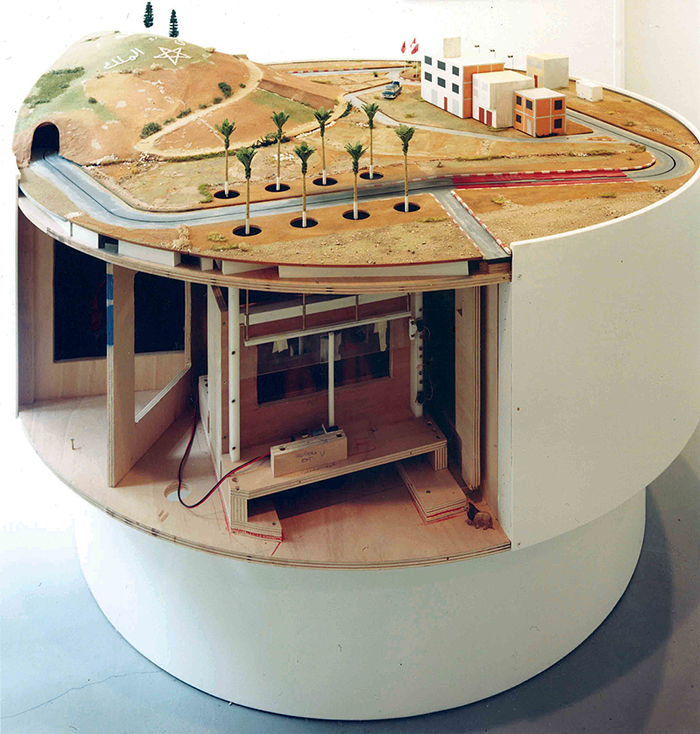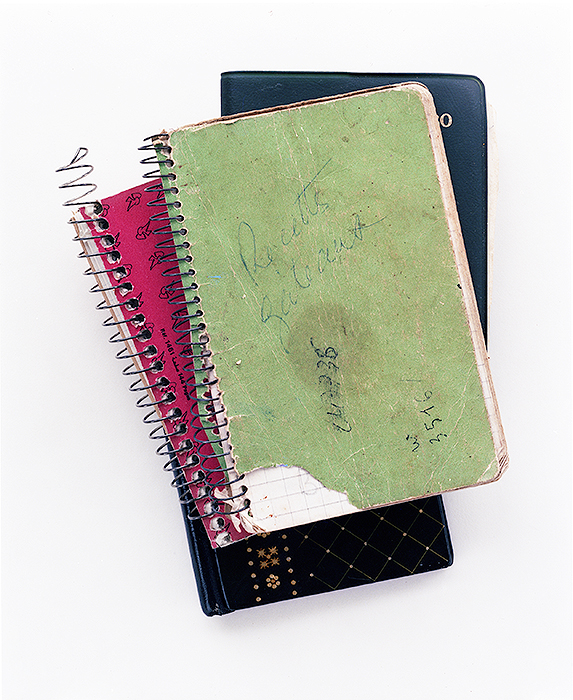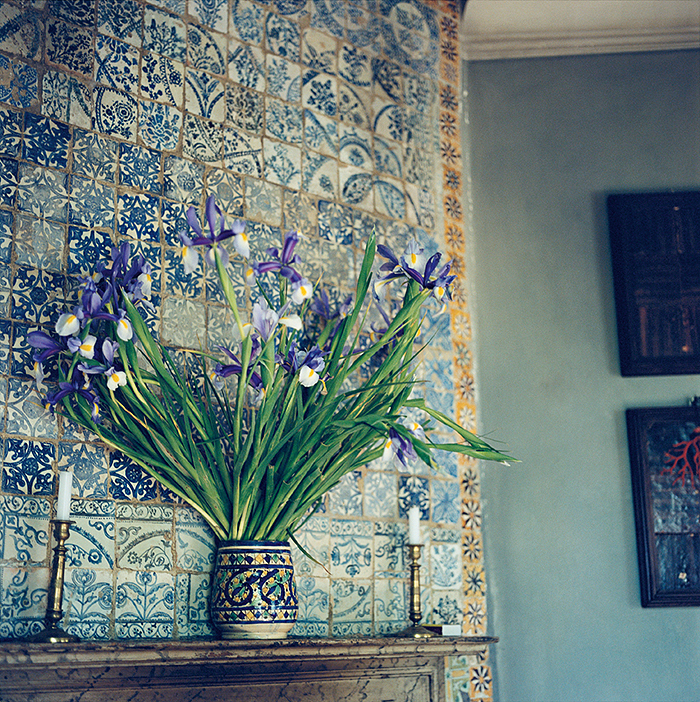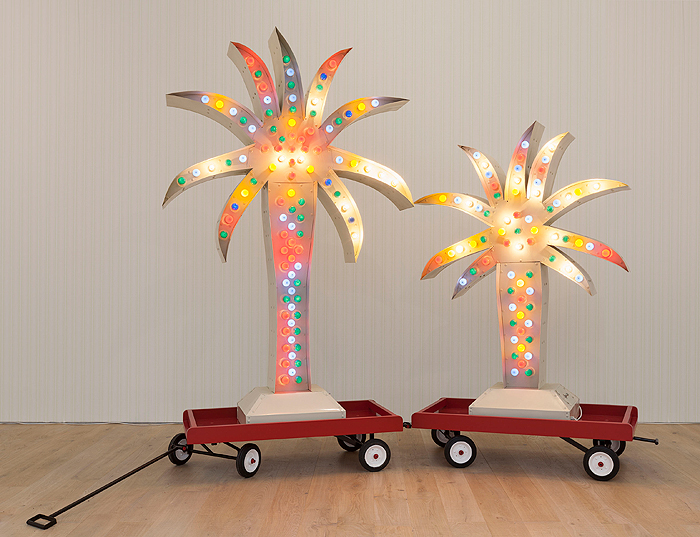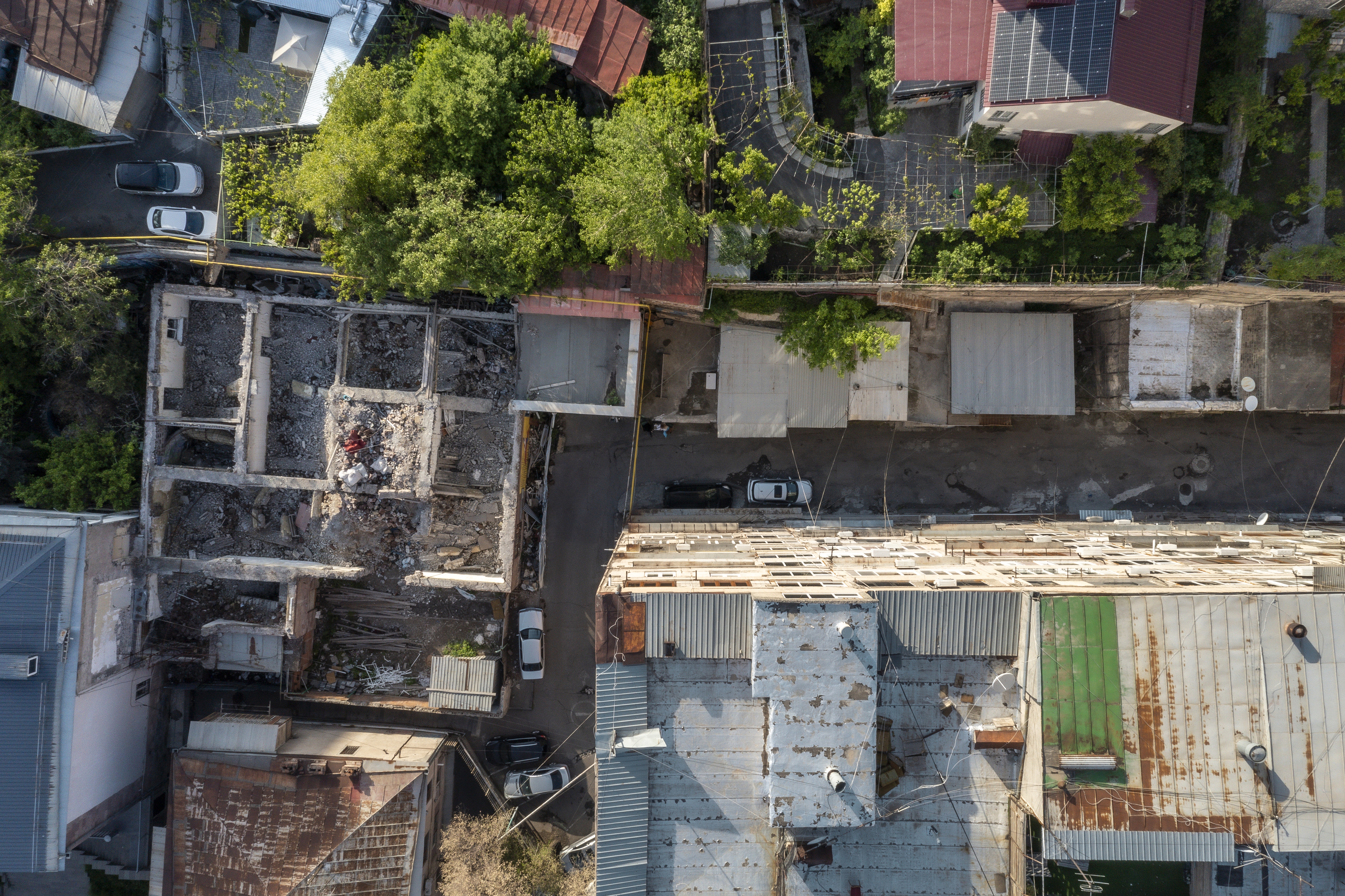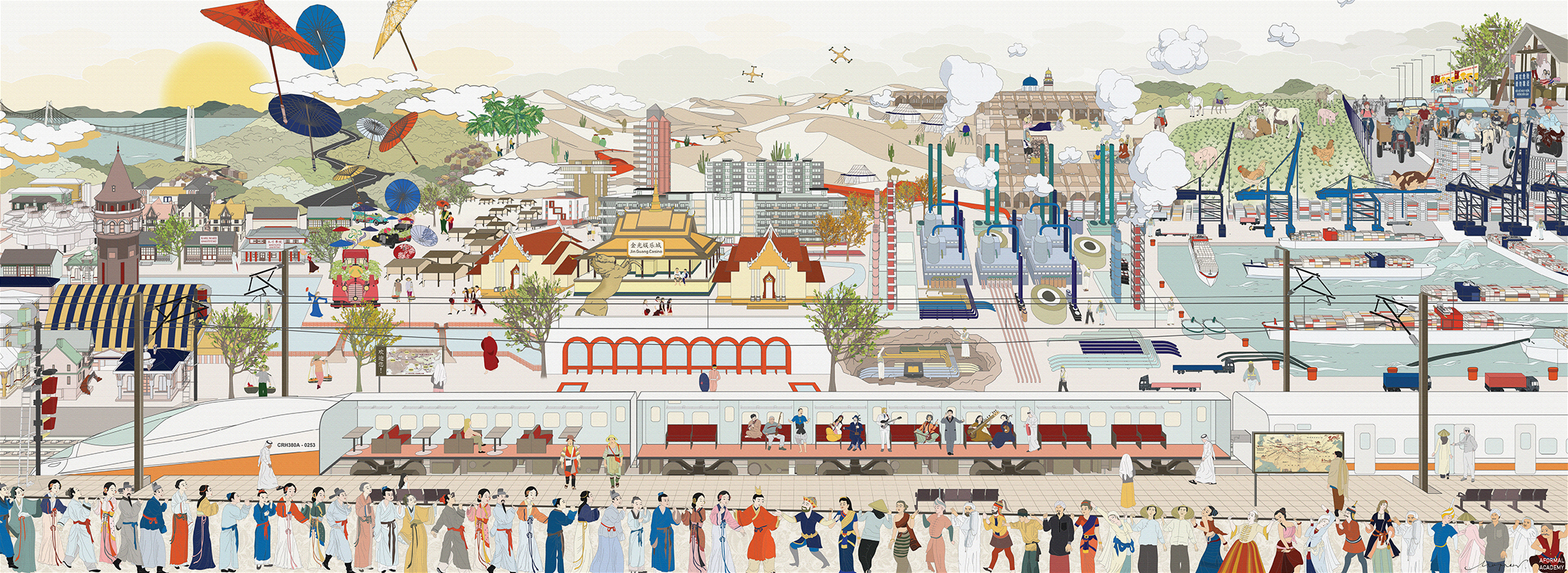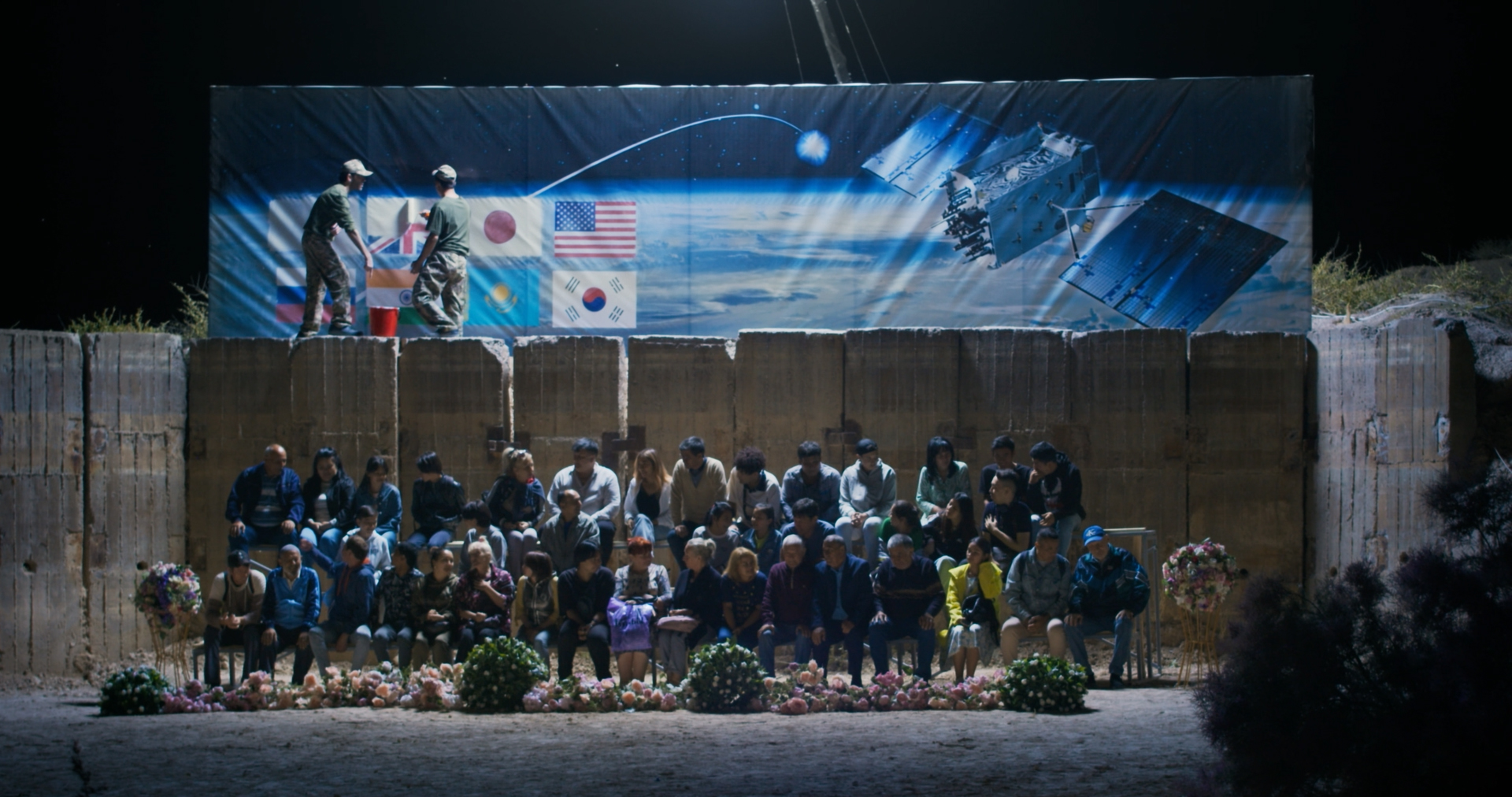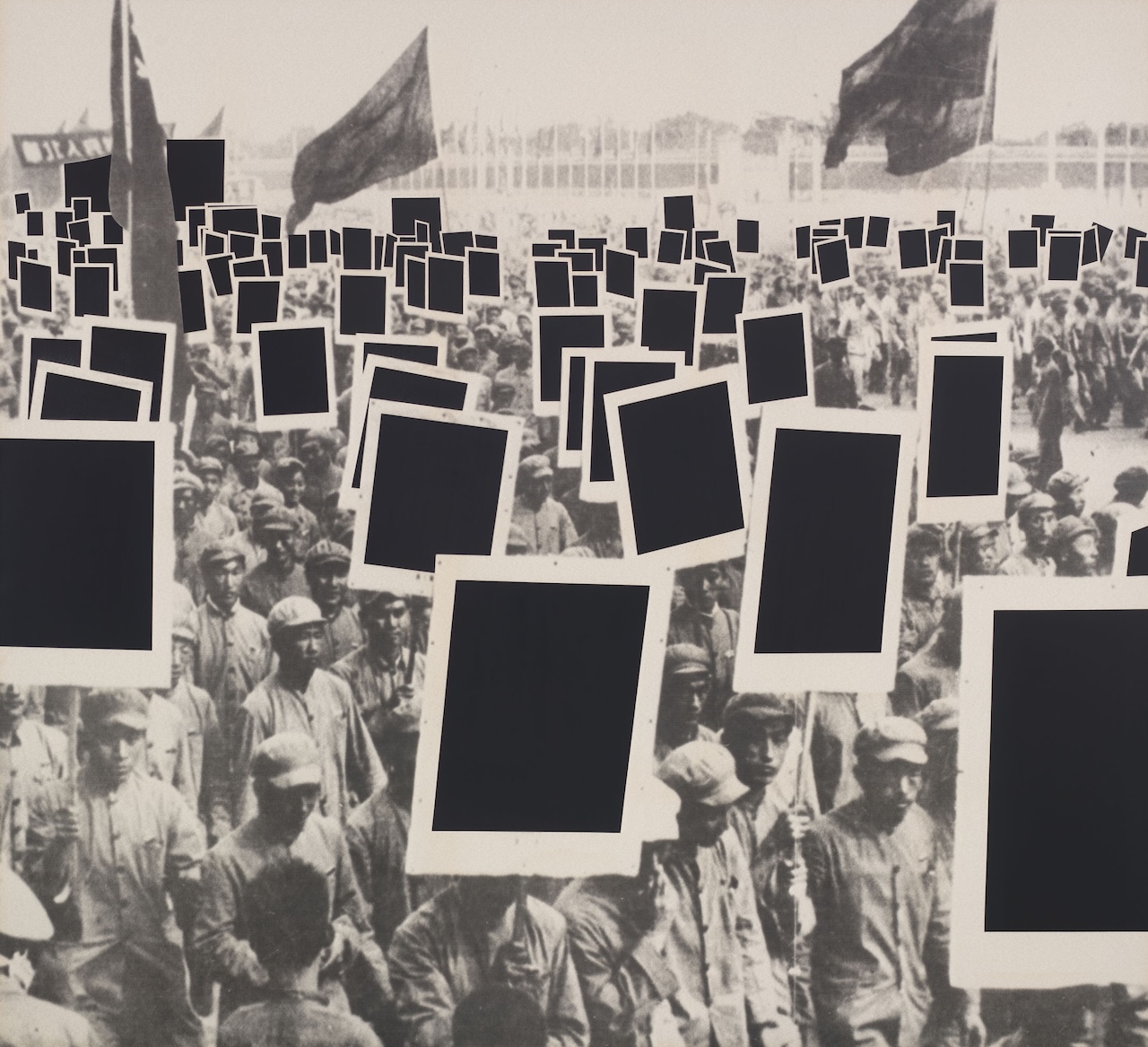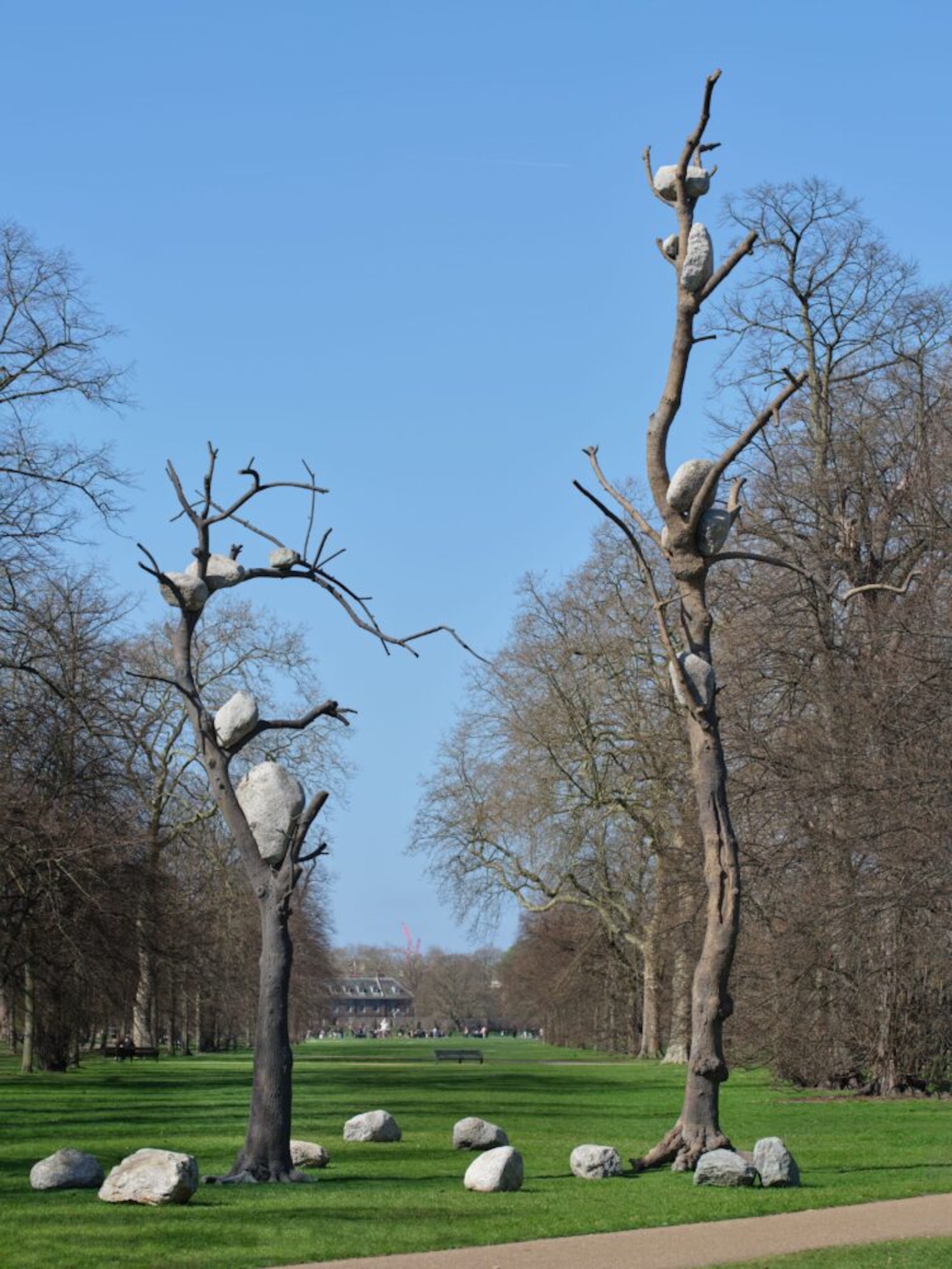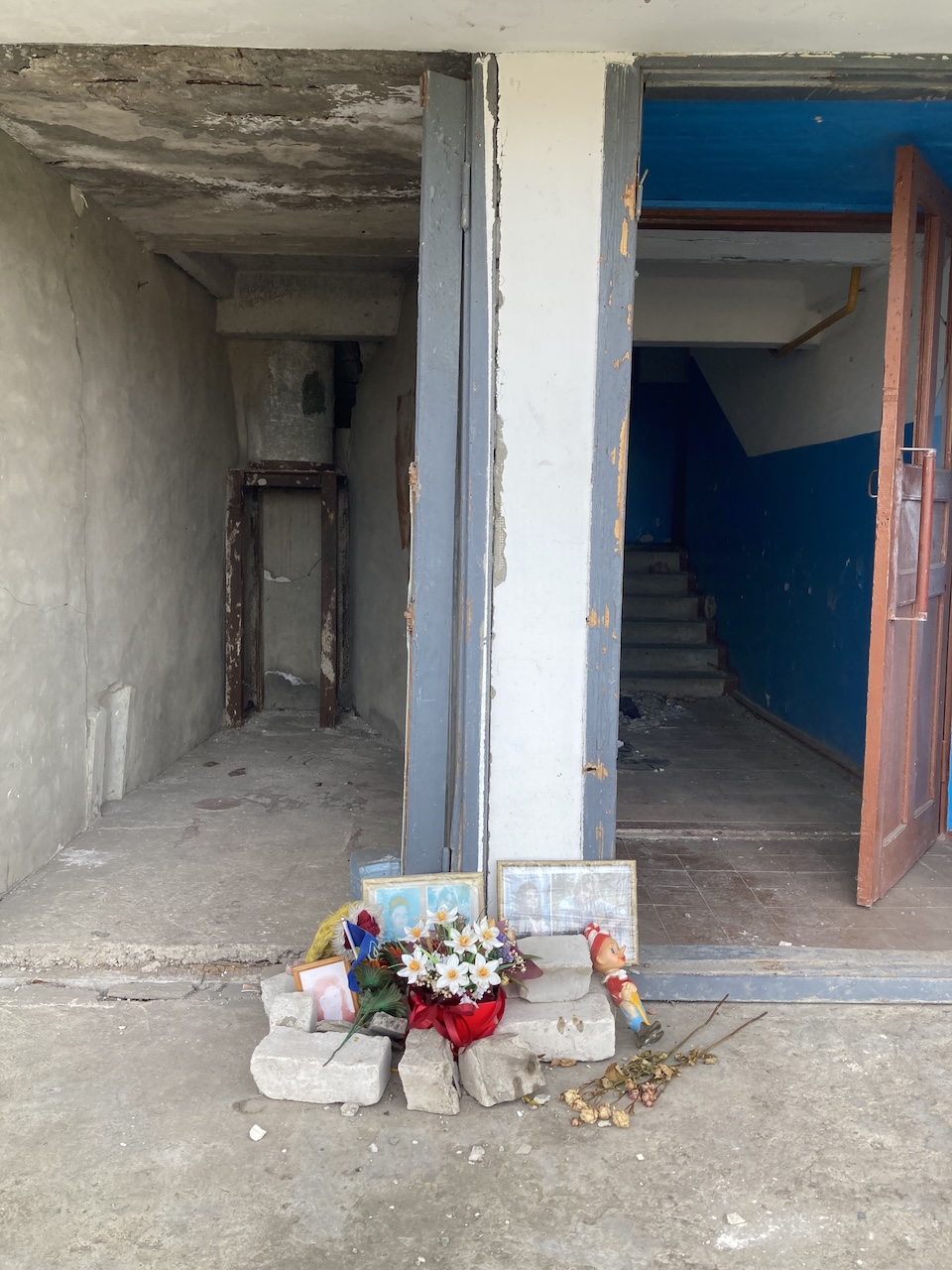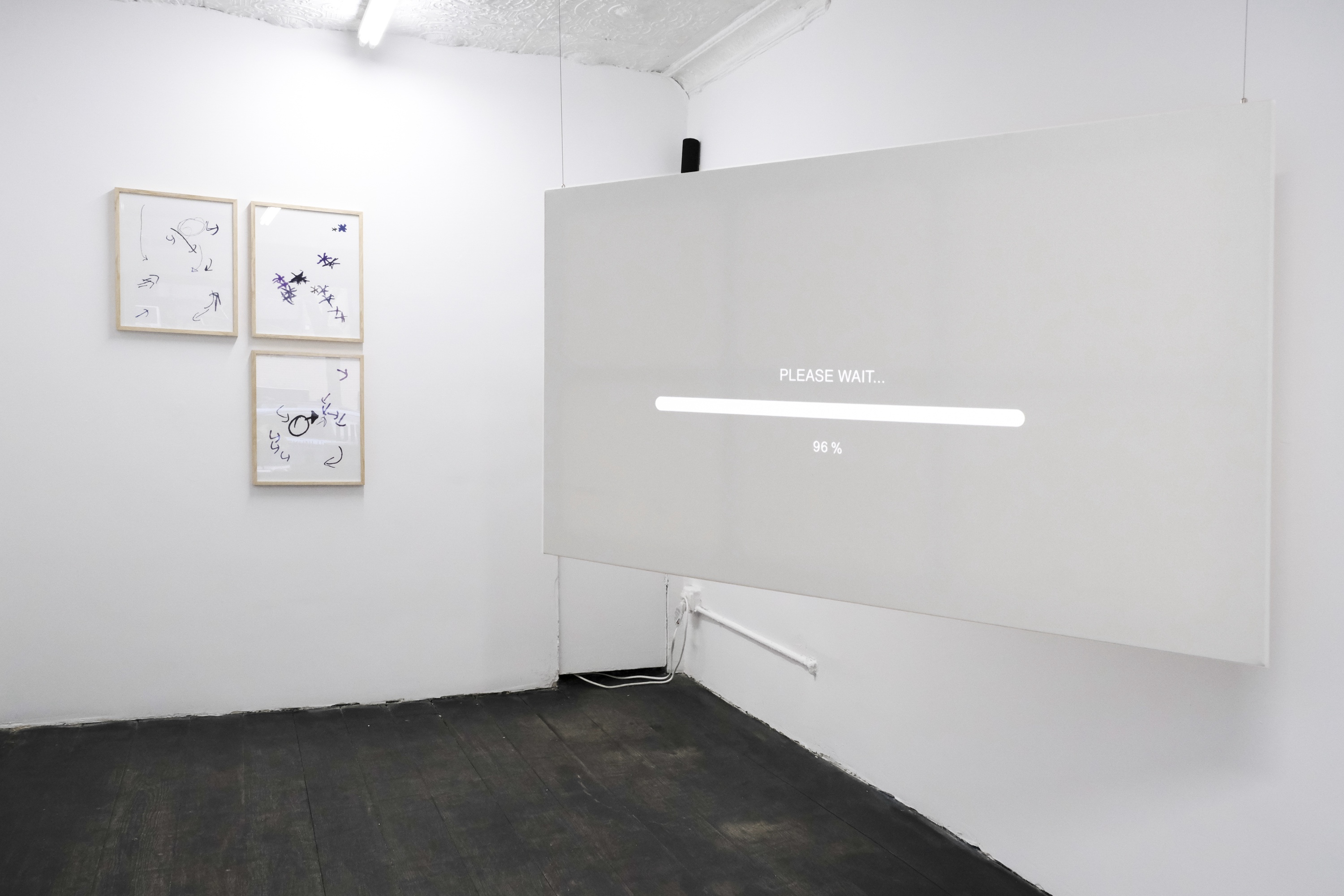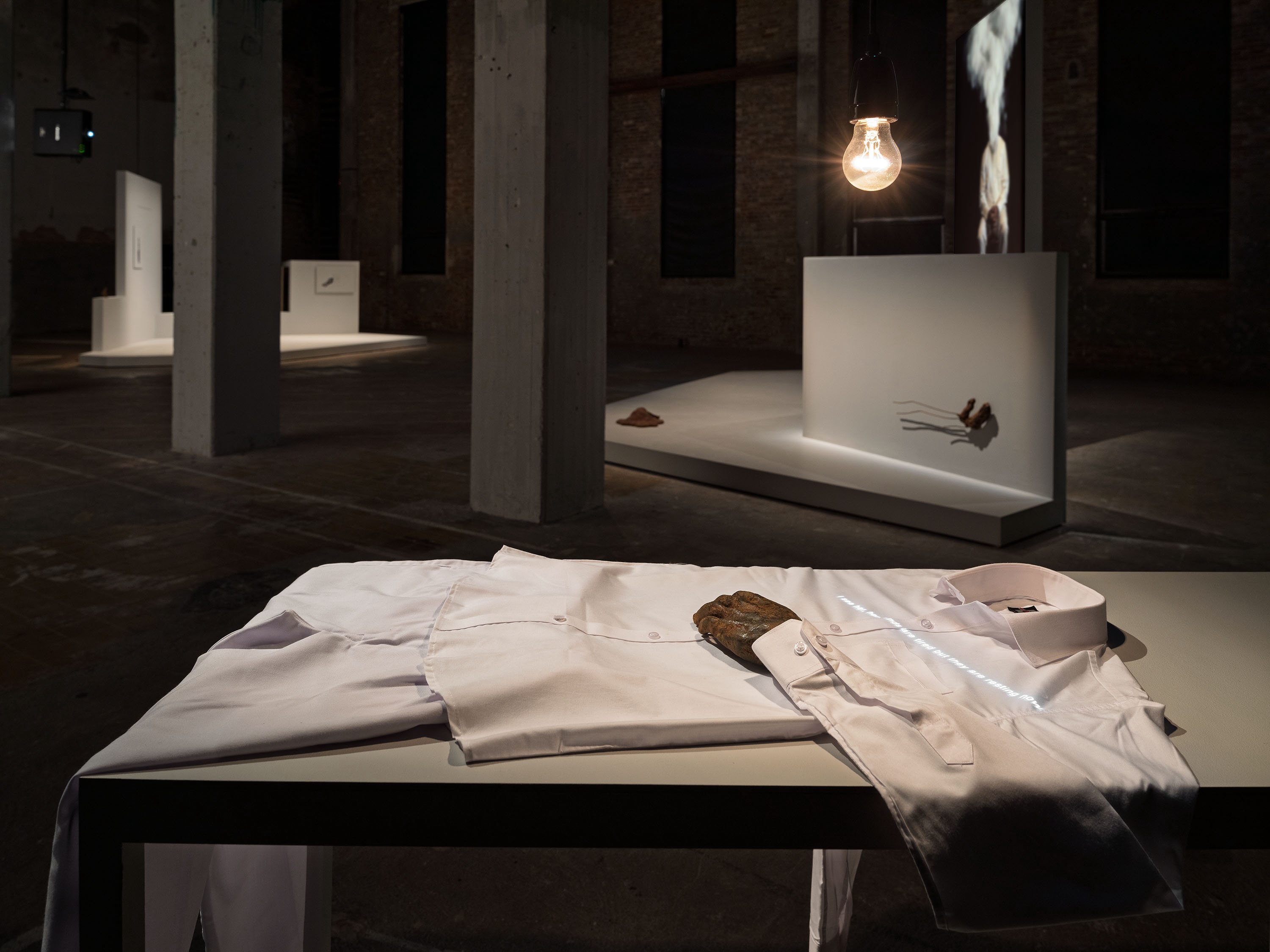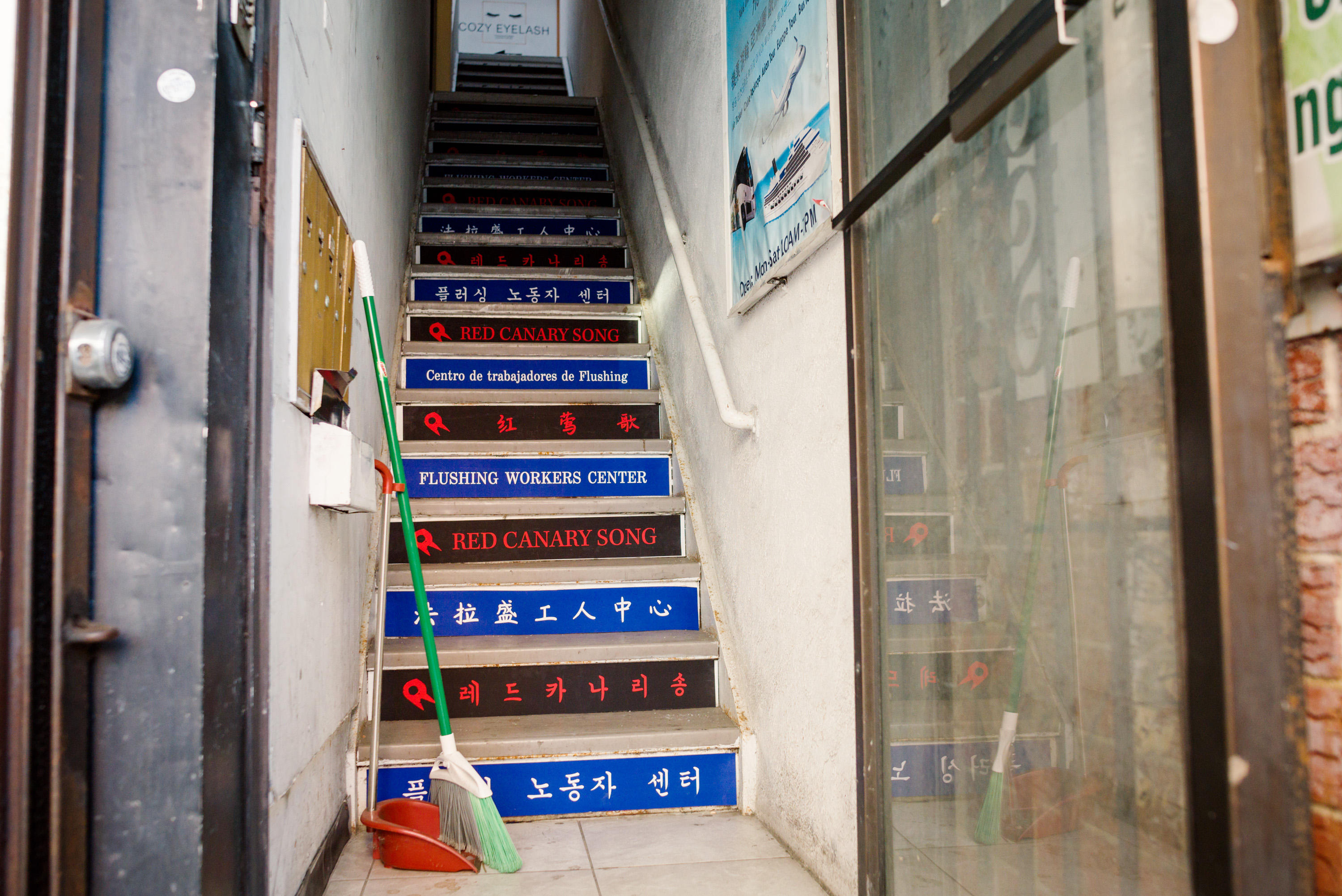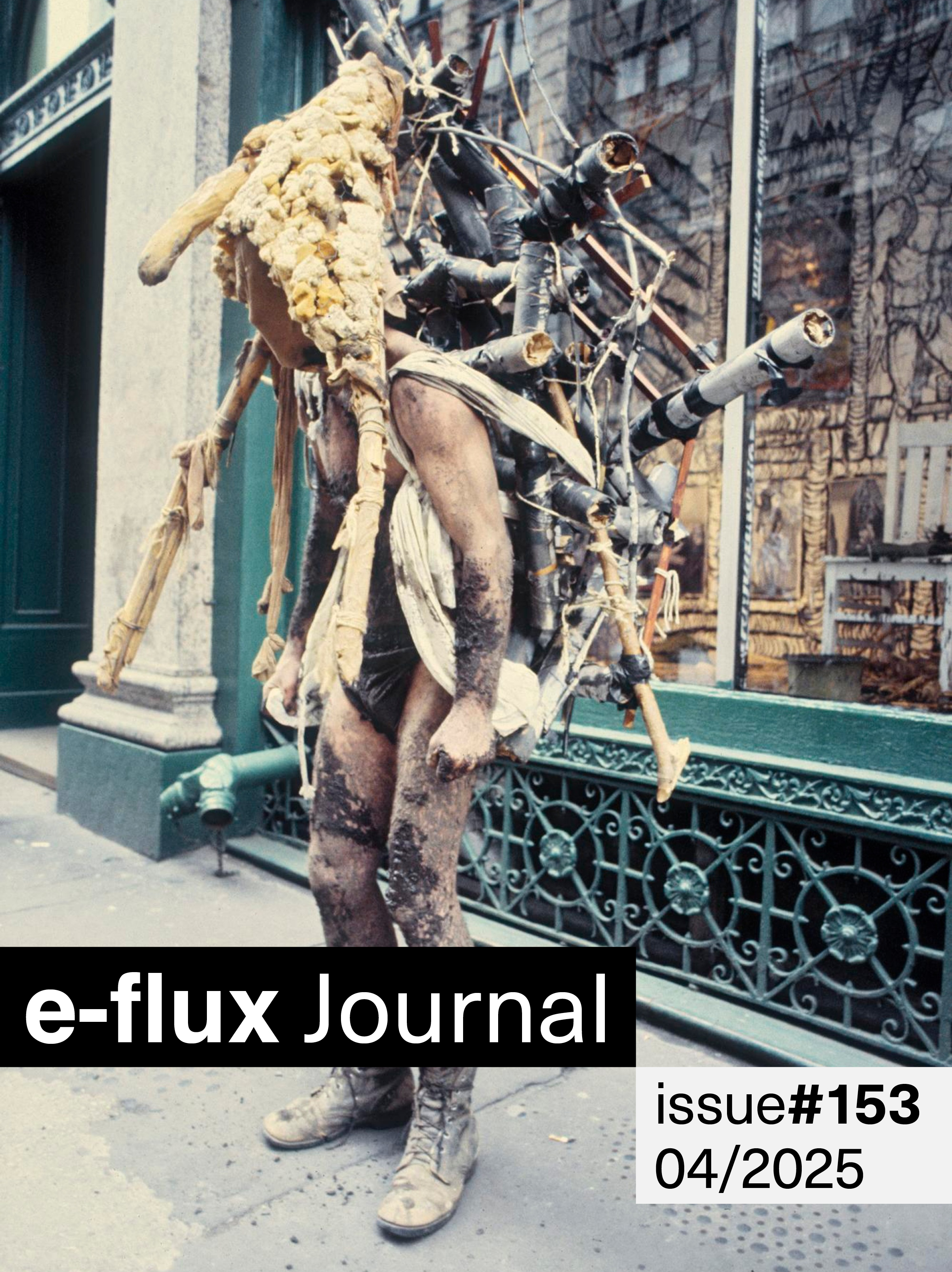May 24–July 14, 2012
There are artworks that work on the viewer’s apprehension of an implied absence, and then there are artworks that simply stand there waiting for that apparent lack to be filled in by contextualizing talk. The former has something to do with aesthetic experience, the latter with a loss of interest in it, and standing among Yto Barrada’s work at Pace Gallery London, I get the feeling the talk wins.
Paris-born, French-Algerian Barrada lives in works in Tangier. Barrada is a lot of things: artist, filmmaker, photographer, cultural activist, and, since 2006, director and co-founder of the Cinémathèque de Tanger, now a vibrant art cinema and cultural center. The persistent focus of Barrada’s work is the cultural and social predicament of Morocco and its people—the vagaries of its political history, the impact of migration and globalization—and Barrada’s earlier education in political science informs works that mix bleak humor and a melancholic sense of stasis with an attention to the narratives of power.
This Pace Gallery London show of older and newer work recaps some of Barrada’s ongoing concerns. The brightly colored geometric forms of the "Autocar" photographic series (2004) turn out to be the logos of the buses that traverse the Straits of Gibraltar—forms that become codes for the often illiterate migrants who attempt to stowaway on these buses to enter fortress Europe. The toy-like metal fairground signage of Twin Palm Island (2011), shaped like palm trees, studded with colored light bulbs and standing in an oversized child’s wheeled trolley, returns us to a recurring motif in Barrada’s work—the palm tree, with its complex allusions to the transfer of palm trees from the south of Morocco to the north, as an act of official cultural image-making. Then there are the blow up photographs of pages of penciled cipher of "The Telephone Books (or The Recipe Books)" (2010), which turn out to be a notation system the artist’s grandmother invented to record telephone numbers, not being able to read or write. Finally, there’s Gran Royal Turismo (2003), a mechanical model diorama, in which a convoy of official limousines endlessly drive through a shabby North African town. Palm trees emerge suddenly from the pavement and walls revolve to appear freshly painted while red carpets slide out from under curbstones to present a happy, loyal face to the representatives of political power before reverting to its dusty, broken-down toy-scaled entropy.
They’re works which require backstories to bolster them, and one never gets away from the impression of just how tastefully minimal Barrada’s sense of visual incident is. Perhaps that tastefulness is consciously manipulated by Barrada—after all, the gallery has been wallpapered with pastel-colored patterns alluding once again to the palm tree. Barrada’s interior design wryly suggests the deadening formalization of the exotic imaginary that the palm tree represents, while rendering it fit for the modern interior of the attentive contemporary collector. "Mobilier Urbain" (urban furniture) may ironize the trammeled, bureaucratic reality of a North African nation by conflating the public and domestic, the personal and the public, but one wonders whether this low-temperature visual interest functions as a critical gesture or merely assumes that its work will be completed by a polite reading of Barrada’s extended narratives. There is something irritatingly well-mannered about the series of documentary photographs on display; recording wild landscapes, derelict and broken-down buildings, and lowly domestic interiors with a cool, stilled eye, Barrada’s images are elegantly composed, rich in color and detail. Nothing unpleasant, nothing disturbing. Yet one feels nervously compelled to check the gallery notes for fear of missing the allusive meaning or the freighted insights of Barrada, the cultural activist. As aesthetic strategies they seem afflicted by an inertia that is in direct contrast to the energy of Barrada’s critical interests.
Of course, that inertia may itself be the deeply internalized expression of the stultified conditions that afflict a state such as Morocco; or they may alternatively represent how artworks can become little more than visual props for critical projects that deploy them as subsidiaries in a strategically multi-disciplinary practice. It may be symptomatic of a mode of contemporary art where legibility takes priority over visual complexity, but while Barrada may be busy doing many things, it’s impossible to shake the nagging feeling that making gallery-sized art objects is the least of her worries. And maybe that’s not such a bad thing.
